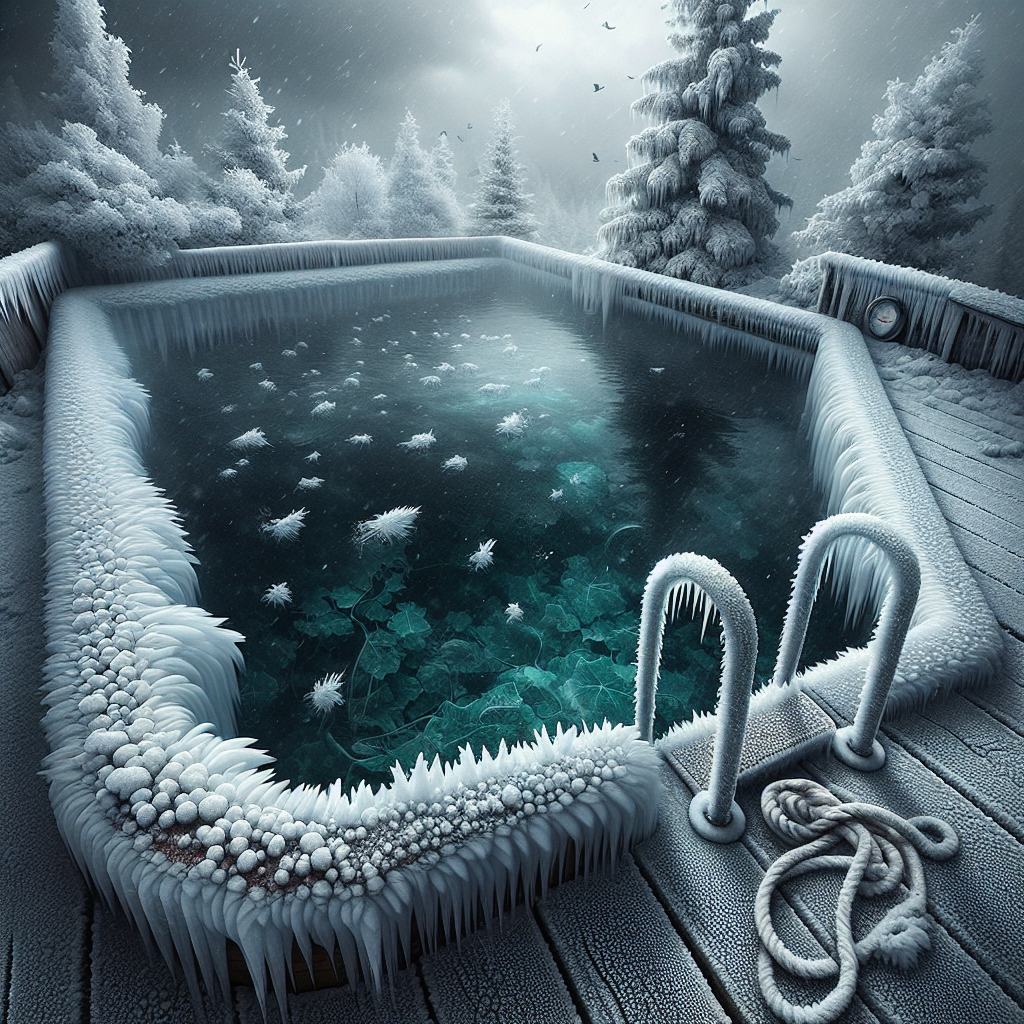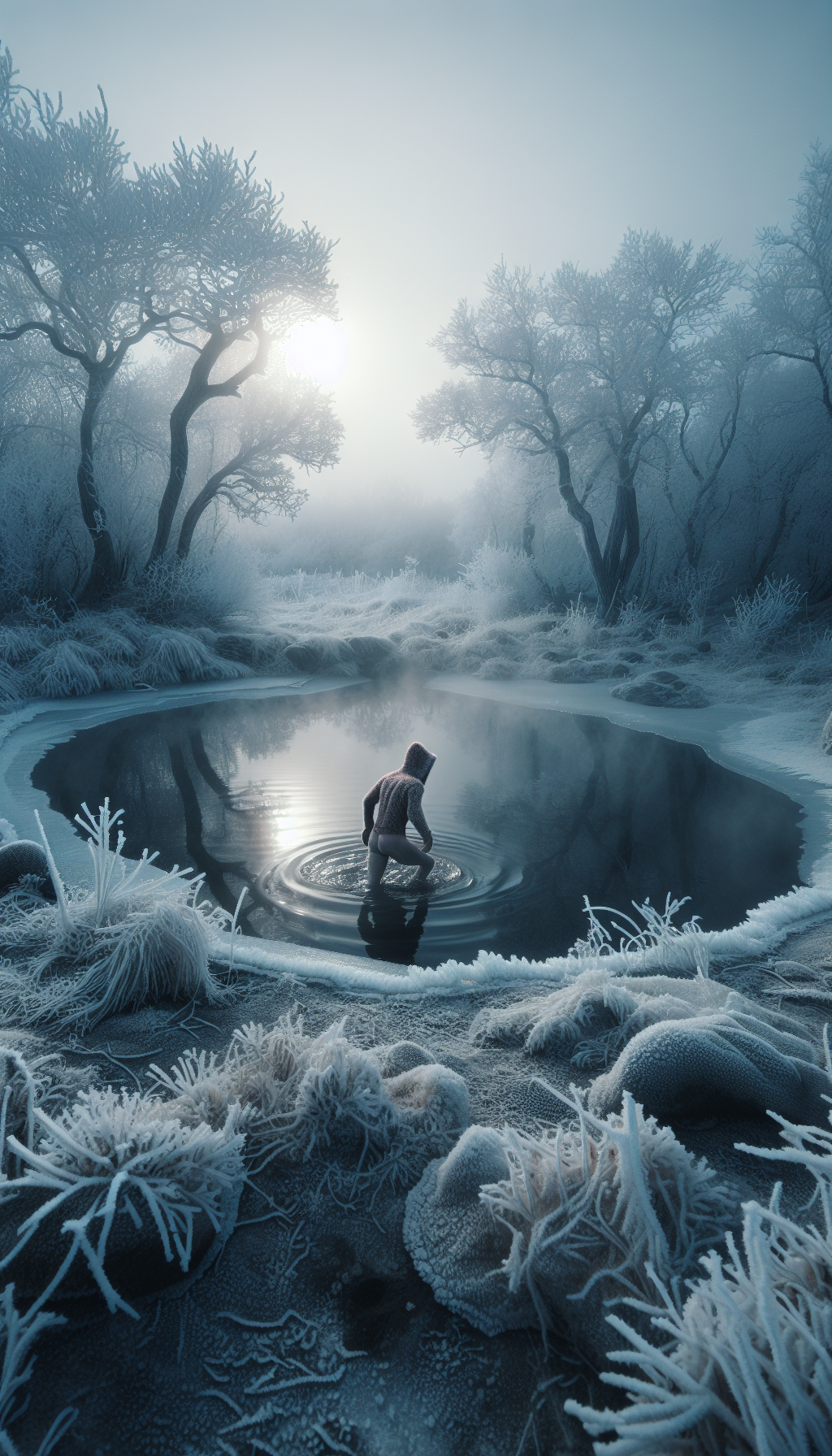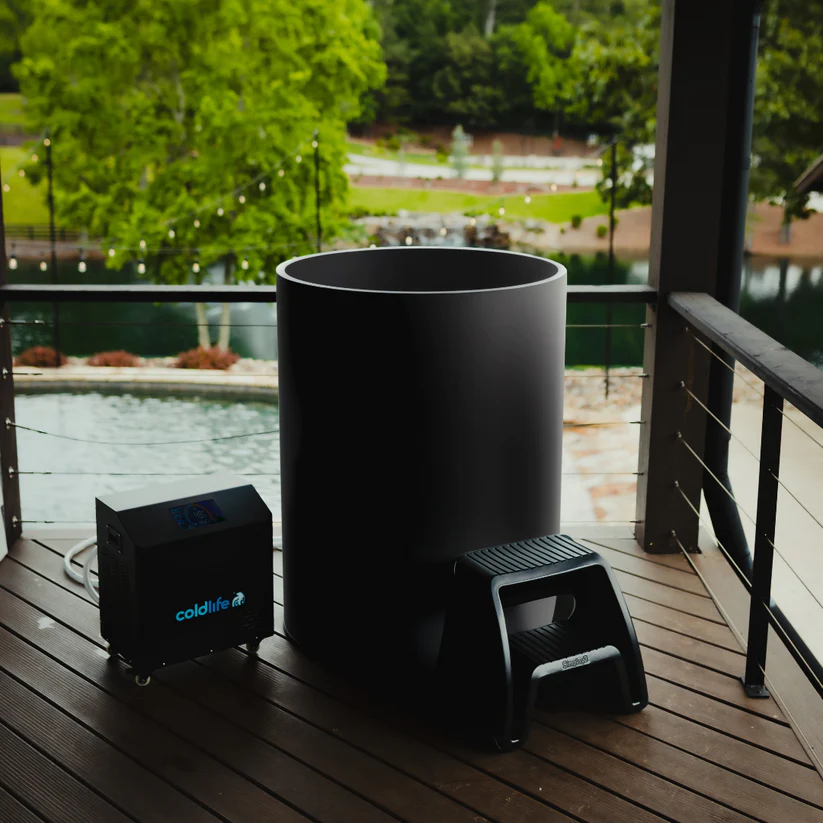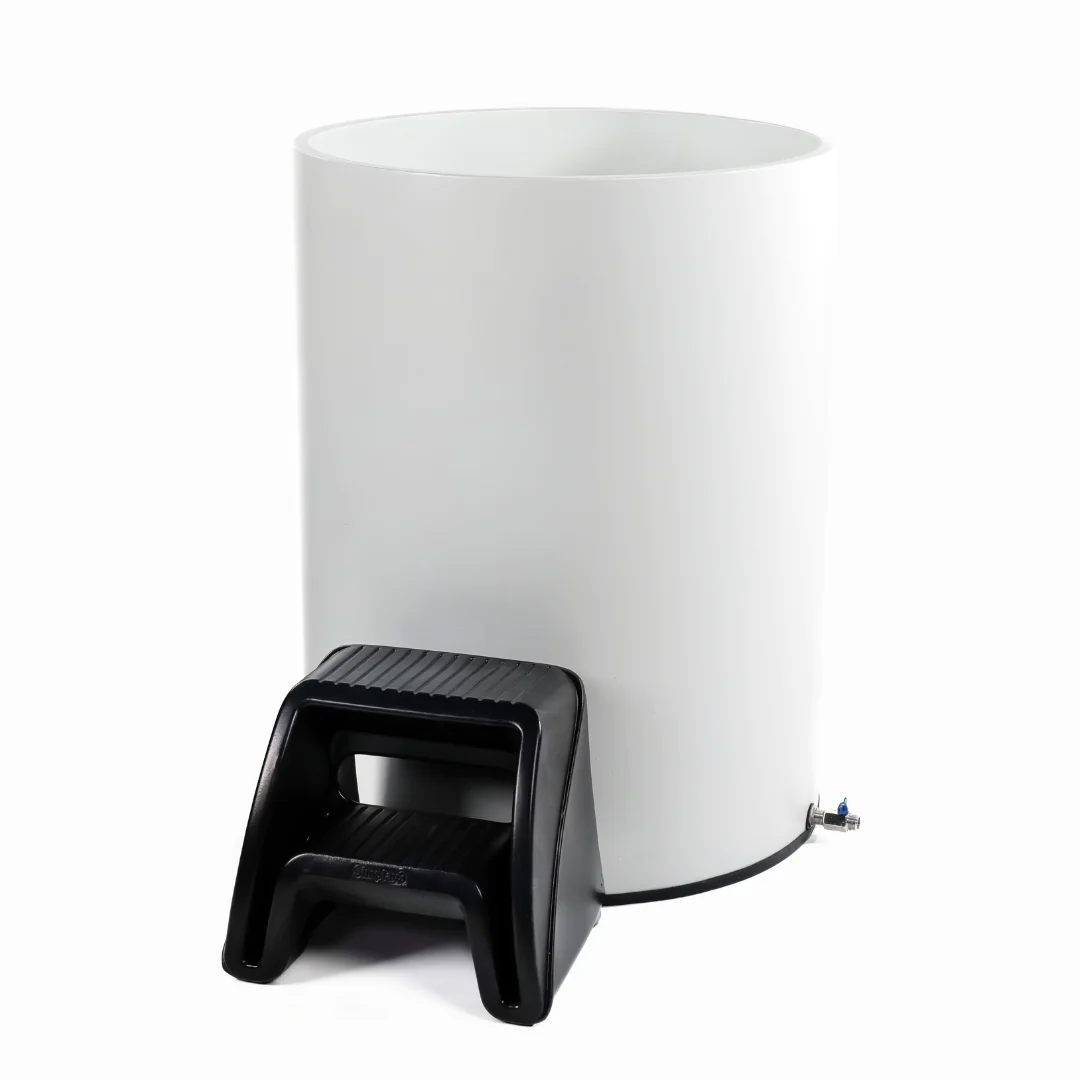Key Takeaways – What temperature is too cold for a cold plunge
Takeaway 1:
Cold plunge temperatures can vary greatly depending on the individual, their tolerance to cold, and their prior experience with cold plunges. There isn’t a standard temperature set for this practice. Many participants use water temperatures ranging from 38 to 60 degrees Fahrenheit.Takeaway 2:
As one becomes more accustomed to cold plunges, they can aim for temperatures between 5-10 degrees Celsius (41-50 degrees Fahrenheit). However, it is suggested not to start at a very low temperature like 39 degrees if you are new to this practice. The generally accepted safe temperature range for cold plunges is between 10-15 degrees Celsius (50-60 degrees Fahrenheit).Takeaway 3:
If you’re new to cold plunging, it’s recommended that you begin with warmer temperatures around 60°F (15°C) and gradually work your way down as your body acclimates. Different sources suggest avoiding temperatures below either 50°F or even as high as 60°F until you become more accustomed. Always listen carefully to your body’s signals during such practices and avoid going below a certain threshold to prevent health risks such as frostbite or hypothermia. In conclusion, it’s important not to go too extreme with the cold plunge temperatures. Anything below the mid-30s in Fahrenheit would be considered too extreme for most people. While colder plunges may offer more benefits, there is a point where the risks outweigh the advantages. So be cautious and mindful of your body’s limits during these practices. Stay safe and enjoy the therapeutic benefits of cold plunges!Our #1 Best Recommended Cold Plunge
For an invigorating and refreshing experience, step into our Cold Life section. Here, you’ll find everything you need to immerse yourself in a world of cooling solutions. So don’t wait up, dive into the icy thrills offered by our Cold Life page and make your life chillier!Are you ready to redefine your limits with cold immersion?
Explore the compelling truth behind cold plunging and its remarkable benefits for mind and body.
Dive into the Cold Life Plunge Bundle now to embark on your journey to revitalization and strength. Transform your life today!
Here’s a Youtube Video about What temperature is too cold for a cold plunge
When discussing cold plunge temperatures, utmost safety should be your primary focus.
Typically, suitable temperatures for cold plunges range from 50°F to 60°F, especially for beginners.
It’s important to note that one should not engage in a cold plunge at temperatures below this range during the initial stages as it could be potentially harmful.
Therefore, to answer the query “what temperature is too cold for a cold plunge?”, any temperature below 50°F could significantly increase risks such as hypothermia and frostbite and is generally considered too extreme particularly for novice participants.

Understanding the Basics of Cold Plunge Temperatures
Cold plunge temperatures can fluctuate greatly depending on various factors. You see, it highly depends on the individual, their intolerance to cold, and their prior experiences with cold plunges. While there isn’t a set standard for this practice, most enthusiasts range from using water between 38 to 60 degrees Fahrenheit. As you become more accustomed to this form of hydrotherapy, you can gradually aim for a chilly 5-10 degrees Celsius (41-50 degrees Fahrenheit).
The Range of Temperature for Cold Plunges: From Novice to Experienced
In any case, it’s worth noting that the safest temperature ranges differ if you’re an experienced plunger or a newbie. You may find more experienced folks plunging into freezing waters as low as 41 degrees Fahrenheit! Meanwhile, those new to cold plunge safety, are generally advised not to start with such extreme temperatures.
- Diving right into such intense conditions can be risky and cause more harm than good.
- A safer bet if you’re new would be somewhere around the ballpark of 60°F (15°C) before slowly moving onto chillier conditions.

Download this courtesy guide to optimize your sauna and cold plunge experience and health optimization.
Download the Free Guide TodaySafety Precautions to Consider Before Starting a Cold Plunge
All things considered, safety should never be an afterthought when planning for a cold plunge. Factors like frostbite and hypothermia are real risks associated with excessive exposure to cold. Therefore, essence of cold bath guidelines and safe cold plunge practices are of utmost importance to keep in mind.
Identifying Starting Temperatures for New Cold Plunge Participants
To put things in perspective, a novice should ideally begin their cold plunge journey around 60°F (15°C). Bear in mind; maximum benefit from a cold soak doesn’t necessarily mean the coldest temperature you can endure. There’s wisdom in gradually adapting your body’s tolerance levels to colder temperatures over time.
Why Temperatures Below 50°F or 60°F Should be Avoided in the Initial Stages?
You see, plunging into water below 50°F or even 60°F might seem like a fast track to reap more benefits but it can have detrimental effects if your body is not acclimated already. For those new and less tolerant towards cold environments, I’d recommend starting with higher temperatures around 68F before lowering the temperature gradually.
The danger of extreme temperatures in cold plunge:
In fact, an extremely low temperature runs higher risks such as hypothermia and frostbite which certainly outweighs any potential benefits that you might think of achieving.
Deciphering When a Cold Plunge Becomes too Extreme: The Risk of Hypothermia and Frostbite
Aiming for anything below mid-30s Fahrenheit would be considered too extreme for most people. It is crucially important to remember that while colder plunges might seem beneficial due to popular belief, the health risks also increase substantially if it’s too chilly. Therefore, always listen carefully to your body’s signals during any cold therapy temperature practices.

Understanding the right cold plunge temperature is crucial for a safe and effective experience. Temperatures too cold can be dangerous, especially for those new to this wellness practice. Cold plunges have been known to have several health benefits, but safety should always come first. For those who are wondering about the length of time in the cold water, it’s essential to know that there’s no universal answer as it depends on various factors including your tolerance and physical condition. If you’re not sure if a 10-minute duration is too long or just right, you might find some valuable insights on this topic at is a 10-minute cold plunge too long?. Moreover, many people experience confusion between different therapies like cryotherapy and cold plunges. Both methods use extreme cold temperatures to provide therapeutic benefits but are carried out differently. For a comparison between these two remedies, you can check out Cold Plunge or Cryotherapy. There’s also a growing interest in exploring the benefits of switching from heat therapy like saunas directly into a cold plunge. The sudden shift in temperature is believed to stimulate various physiological responses that offer health benefits; however, it’s crucial to understand what exactly happens when you do so? Find more details at What happens when you go from sauna to cold plunge?. Furthermore, certain conditions might require precautions while attempting cold plunge therapy. For instance, pregnancy can make women more sensitive to temperature extremes, so they must be cautious. If you’re pregnant and contemplating whether it’s safe to continue with cold plunges, refer to this comprehensive discussion at Are Cold Plunges Safe During Pregnancy?. Lastly, after the cold plunge experience, it’s vital to follow some essential steps to ensure maximum benefits from the therapy. Information about what should be done can be found on What To Do After You Cold Plunge, which discusses these aspects in detail.
My Personal Take about What temperature is too cold for a cold plunge
Hey there!
My name is George, your go-to specialist for all things Saunas and Cold Plunges.
You see, after years of researching and experiencing, I’ve developed an in-depth understanding of what temperature is too cold for a cold plunge.
In any case, it’s important to understand the limits of hypothermia prevention – that’s where my latest blog post “What Temperature is Too Cold for a Cold Plunge: Understanding the Limits of Hypothermia Prevention” comes in handy.
You might be wondering, “George, how can I use this knowledge to enhance my wellness routine?”
Well friend,
- The exhilarating experience of a sauna followed by a cold plunge rejuvenates your body,
- The switch from hot to cold stimulates circulation,
- And this combination can also help reduce stress.
Words of Advice: Never underestimate the power and benefits these techniques could bring to your life. Why not give it a shot? In fact, I guarantee that you’ll come out feeling more invigorated and ready to tackle whatever the day brings. Stay cool!
Our #1 Best Recommended Cold Plunge for most People
In the pursuit of wellness, many are exploring the benefits of cold water immersion. However, it is important to be aware of safety guidelines and precautions as getting plunged into too cold water can lead to hypothermia. It’s recommended to follow a program like The Cold Life to ensure you’re navigating this health regimen safely and effectively.Discover the unparalleled benefits of cold immersion with ColdLife Plunge 1. Unleash your full potential with our innovative cold plunging solution. Explore the transformative effects on your body and mind. Elevate your lifestyle with ColdLife Plunge 1 today!
Frequently Asked Questions about What temperature is too cold for a cold plunge
1. What temperature is considered too cold for a cold plunge?
The generally accepted safe temperature range for a cold plunge is between 50°F and 60°F (10°C and 15°C). Anything below the mid-30s in Fahrenheit would be considered too extreme.
2. Can I start with a very low temperature if I’m new to cold plunges?
No, it is suggested not to start at a very low temperature like 39 degrees if you are new to this practice. It’s recommended that you begin with warmer temperatures around 60°F (15°C) and gradually work your way down as your body acclimates.
3. Is there a specific standard temperature set for cold plunges?
No, there isn’t a standard temperature set for cold plunges. Cold plunge temperatures can vary greatly depending on the individual, their tolerance to cold, and their prior experience with cold plunges.
4. What are the potential risks of exposing yourself to extremely cold water during a plunge?
Exposure to extreme cold can cause frostbite, hypothermia, and other injuries. Therefore, it’s important not to go below a certain threshold and listen carefully to your body’s signals during such practices.
5. Can I aim for colder temperatures as I become more accustomed to cold plunges?
Absolutely! As you become more accustomed to cold plunges, you can gradually aim for colder temperatures between 41-50 degrees Fahrenheit (5-10 degrees Celsius). However, always prioritize your safety and avoid pushing yourself too far beyond your comfort zone.
6. Should I consult with a healthcare professional before starting cold plunges?
If you have any underlying health conditions or concerns, it’s always a good idea to consult with a healthcare professional before starting cold plunges. They can provide personalized advice based on your specific needs and medical history.
Now you know What temperature is too cold for a cold plunge , but that’s only the beginning of your journey here at Sweat N Chill Zone. If you found this post useful there’s more to learn to get you to the next step of your sauna & cold plunge journey. If you read our next articles you’ll be a step further than most people.
Before you go…
Takeaway 1:
Cold plunge temperatures can vary greatly depending on the individual, their tolerance to cold, and their prior experience with cold plunges. There isn’t a standard temperature set for this practice. Many participants use water temperatures ranging from 38 to 60 degrees Fahrenheit.Takeaway 2:
As one becomes more accustomed to cold plunges, they can aim for temperatures between 5-10 degrees Celsius (41-50 degrees Fahrenheit). However, it is suggested not to start at a very low temperature like 39 degrees if you are new to this practice. The generally accepted safe temperature range for cold plunges is between 10-15 degrees Celsius (50-60 degrees Fahrenheit).Takeaway 3:
If you’re new to cold plunging, it’s recommended that you begin with warmer temperatures around 60°F (15°C) and gradually work your way down as your body acclimates. Different sources suggest avoiding temperatures below either 50°F or even as high as 60°F until you become more accustomed. Always listen carefully to your body’s signals during such practices and avoid going below a certain threshold to prevent health risks such as frostbite or hypothermia. In conclusion, it’s important not to go too extreme with the cold plunge temperatures. Anything below the mid-30s in Fahrenheit would be considered too extreme for most people. While colder plunges may offer more benefits, there is a point where the risks outweigh the advantages. So be cautious and mindful of your body’s limits during these practices. Stay safe and enjoy the therapeutic benefits of cold plunges! Are you questioning about how cold is too cold for a cold water plunge? Learn more about the benefits and potential risks when you take a cold plunge. Interested in trying it yourself? Check out our guide on the best way to do a cold plunge and our suggestions for the most affordable options for a quality experience.George From Sweat N Chill Zone
George, the passionate founder of Sweat N Chill Zone, is an ardent advocate for holistic wellness through the healing powers of saunas and cold plunges. With a background in health sciences and a fervent dedication to sharing the benefits of thermal therapy, George curates an informative space, offering insights, tips, and expert advice to help individuals optimize their health and well-being through the transformative effects of heat and cold treatments. Through Sweat N Chill Zone, George aims to inspire and educate, fostering a community centered around rejuvenation and vitality.
Download this courtesy guide to optimize your sauna and cold plunge experience and health optimization.
Download the Free Guide Today

